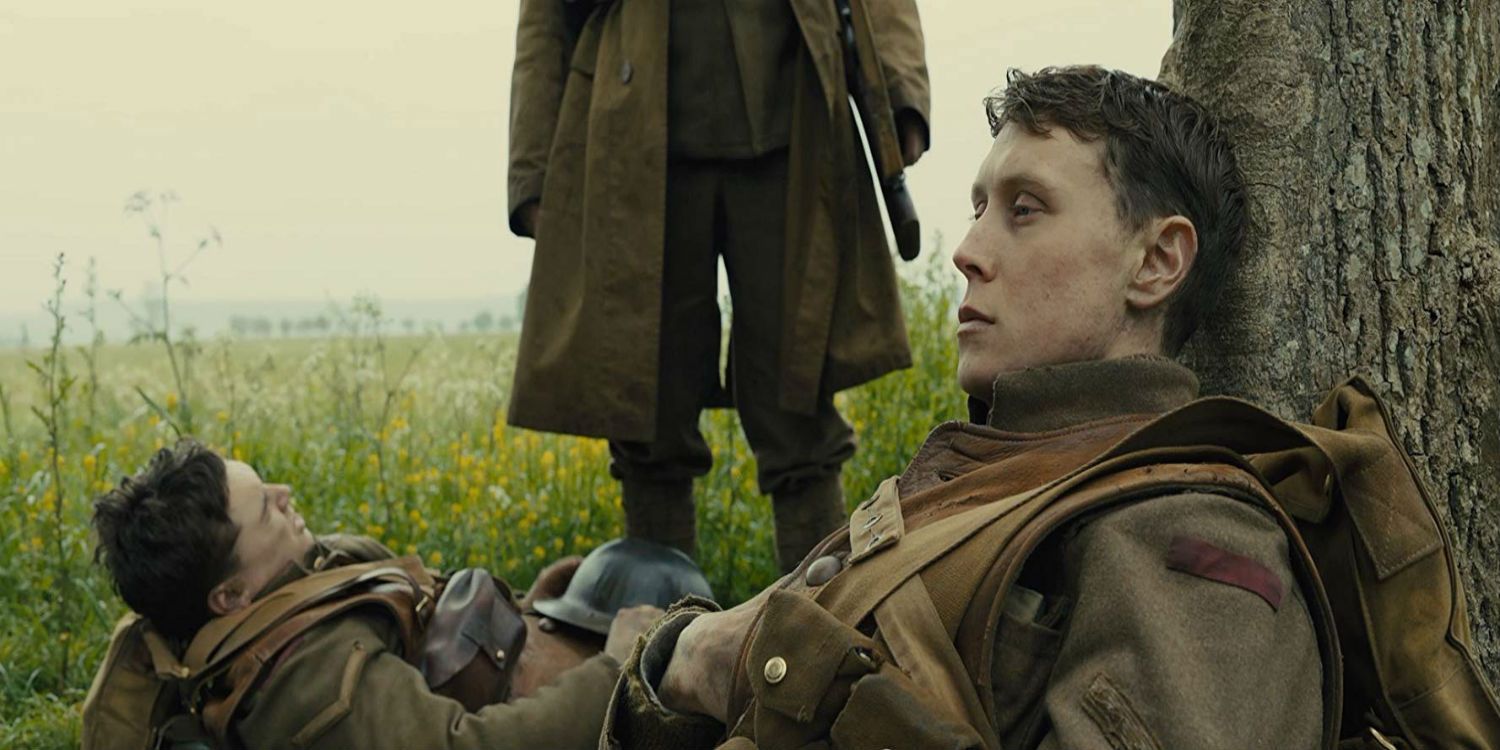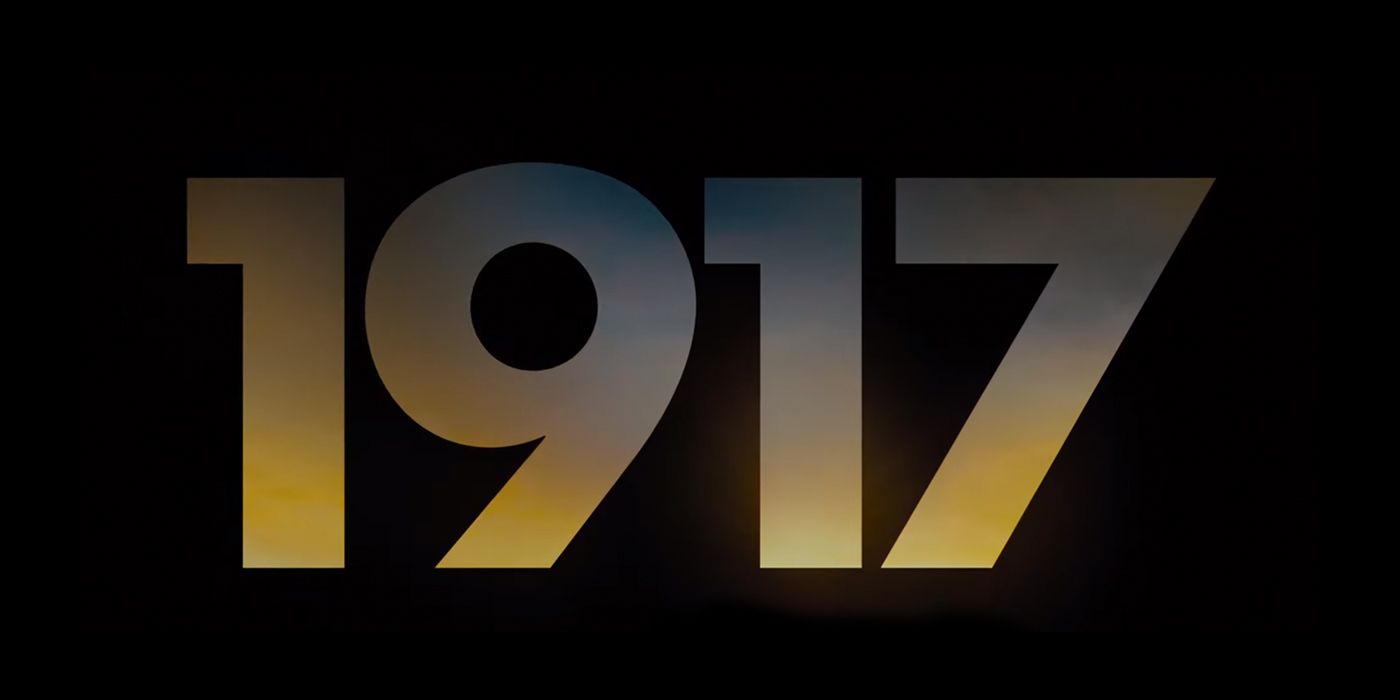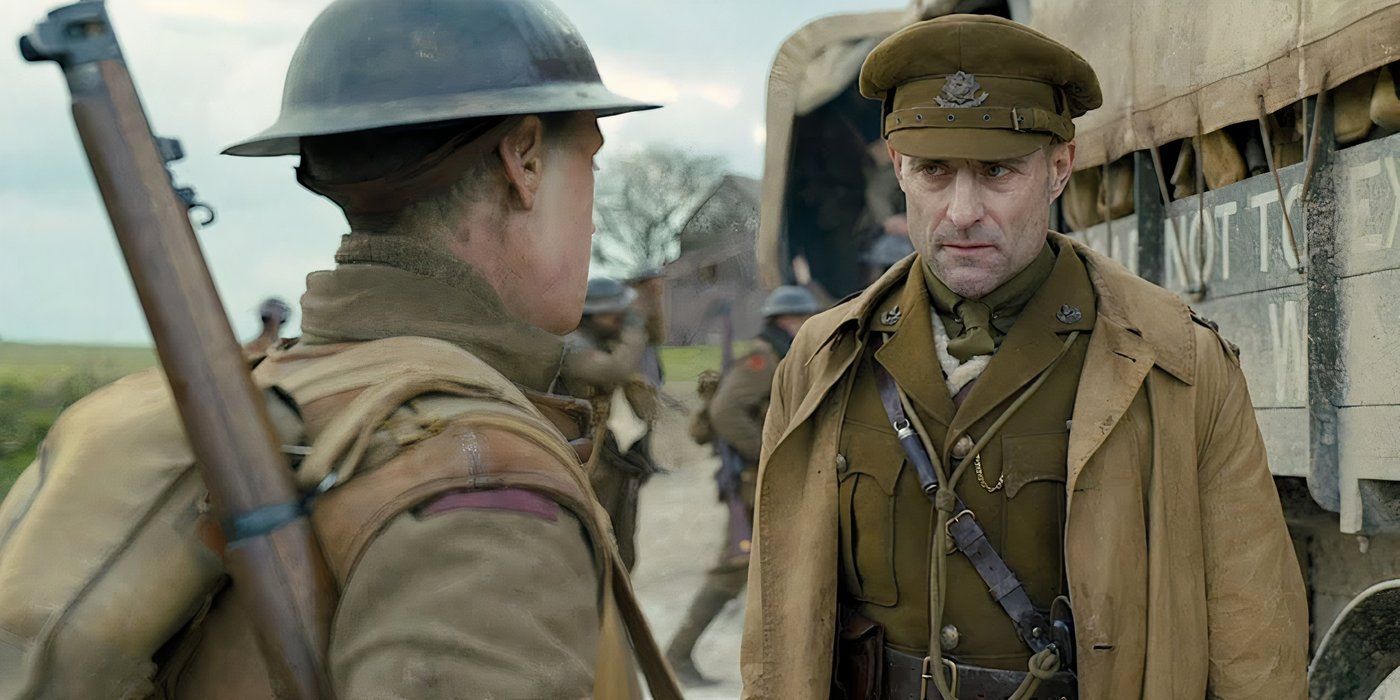Summary
- 1917’s immersive single-take style draws audiences into a thrilling war epic with expertly hidden cuts.
- Schofield’s emotional journey in 1917’s ending reveals deeper themes and a parallel ending shot.
- The reveal of Schofield’s family heightens the stakes and complexity of 1917’s central mission.
Sam Mendes’ 1917 has a relatively straightforward story for much of its runtime – but the ending of the film is more complex than some might think. Mendes’ film is an immersive, thrilling war epic, with 1917‘s single-take filmmaking style drawing audiences into the film on a deeper level. Although the film looks like one take, 1917‘s secret cuts are expertly hidden. This style of production saw the war movie quickly become an awards favorite, as did 1917‘s fantastic ensemble cast.
1917 follows two British soldiers, Lance Corporals Will Schofield (George McKay) and Tom Blake (Dean-Charles Chapman), who are tasked with delivering a message to the Second Battalion of the Devonshire Regiment. They need to tell Benedict Cumberbatch’s Colonel Mackenzie to call off a planned attack; the Germans did not flee as believed but rather made a tactical retreat, lying in wait to ambush the British troops. Inspired by a true story, 1917’s recent online streaming success has brought attention to its ending, a climactic and emotional climax that is packed with deeper, hidden meanings and themes.
Related
1917 True Story: How Much Of The Movie Was Real
1917 is directed by Sam Mendes, who based it on stories told to him by his grandfather, Lance Corporal Alfred H. Mendes, with some liberties taken.
What Happens in 1917’s Ending
Schofield Struggles To Complete His Mission Against A Ticking Clock In 1917’s Ending
In the final act of 1917, Schofield is shown escaping German pursuit through a bombed village after finding a young French woman and a small child hiding amid the wreckage. Eventually, he finds the Second Devons in a nearby forest, where a member of the battalion is singing a song as they prepare to march into battle. To his dismay, Schofield learns that this is the last wave of the attack, and he must forge to the front lines to reach Colonel Mackenzie before the imminent bloodbath.
Schofield races his way through the ranks of soldiers, pushing and shoving through the trenches, with 1917‘s secret cuts being perfectly employed throughout. He asks several soldiers where he can find Colonel Mackenzie, to which they keep pointing him further and further down the trench line. As the attack commences, Schofield realizes he must leave the relative safety of the trenches and sprint across the battlefield in order to have any chance of finding Mackenzie in time. He eventually does so, and hands Mackenzie the handwritten orders to call off the attack.
1917
ends with a final shot of Schofield sitting in a grassy field, in a parallel shot to the film’s opening…
After things settle down, Schofield is determined to find Blake’s brother, Joseph, to make sure that he is able to halt the attack before Joseph enters the battlefield. Schofield eventually finds him, who listens in horror as he learns his brother has died. Schofield gives Joseph some of Blake’s personal items, including rings and a dog tag, then asks him to write to his mother informing her that Blake died a hero. 1917 ends with a final shot of Schofield sitting in a grassy field, in a parallel shot to the film’s opening.
“Come Back To Us”: Schofield’s Family Photos In 1917 Explained
A Major Reveal About Schofield Is Found In 1917’s Ending Moments
One of the more surprising elements in 1917‘s ending is revealed as Schofield retires after speaking with Joseph. The final scene sees Schofield taking a photo of a woman and children out of his uniform, accompanied by a note reading “Come back to us.” This scene reveals that Schofield has a family back home, something that Mendes chose not to reveal to the audience until the final moments of 1917. Although this ends the film on an emotional note, it also provides context for several key moments throughout the film, rendering Schofield’s character arc complete.
In an earlier scene, Schofield and Blake discuss their recent leave. In one of the few moments of emotional clarity from Schofield, he mentions that he hated his leave because he would eventually have to return to the battlefield and put his life in danger once more. This moment is made much more complex upon the reveal of Schofield’s family. The concept of Schofield hating his time at home becomes more poignant when audiences realize he should be enjoying his time with them – but he could only think about what would happen when he returned to the front lines.
Another key moment in 1917 that is changed in hindsight after the reveal of Schofield’s family is the sequence in Écoust-Saint-Mein. In the destroyed French town, Schofield stumbles upon a French woman hiding from German soldiers. She is caring for an infant, and Schofield gives her his canned food and the milk he found at the abandoned farm where Blake previously died. The woman asks Schofield to stay with him, but he refuses, still needing to forge on and complete his mission.
The deep emotion, grief, and turmoil Schofield feels upon having to leave the woman and her child is made much more affecting, and simply makes more sense, after the reveal that Schofield has children back home.
This scene is entirely recontextualized with the added knowledge that Schofield has children of his own. The deep emotion, grief, and turmoil Schofield feels upon having to leave the woman and her child is made much more affecting, and simply makes more sense, after the reveal that Schofield has children back home. Schofield’s paternal instincts make him want to help this woman and child, but he has to keep going or else many more people will die. The scene is layered with subtlety, linking to the final reveal of 1917‘s ending, and played to perfect by cast member George MacKay.
|
1917 Main Character |
Actor |
|---|---|
|
Lance Corporal William “Will” Schofield |
George MacKay |
|
Lance Corporal Thomas “Tom” Blake |
Dean-Charles Chapman |
|
Captain Smith |
Mark Strong |
|
Lieutenant Leslie |
Andrew Scott |
|
Lieutenant Joseph Blake |
Richard Madden |
|
Lauri |
Claire Duburoq |
|
General Erinmore |
Colin Firth |
|
Colonel Mackenzie |
Benedict Cumberbatch |
Perhaps most importantly, the reveal of Schofield’s family heightens the overall stakes of 1917‘s central mission. Viewers understand Blake’s motivations from 1917‘s outset: he wants to save his brother and will stop at nothing to do so. Schofield seems more hesitant throughout, and after he nearly dies due to the tripwire in the German bunker, he wants to turn back. Knowing he had a family back home, this makes much more sense.
However, when Blake dies, the mission becomes more important to Schofield on a personal level. He knows the Blake family has already lost one son, and he needs to succeed in his endeavor to save the other. This links to the ideals of family, connecting to Schofield’s final reveal and his heroism, as he continues despite the immense personal cost should something happen to him.
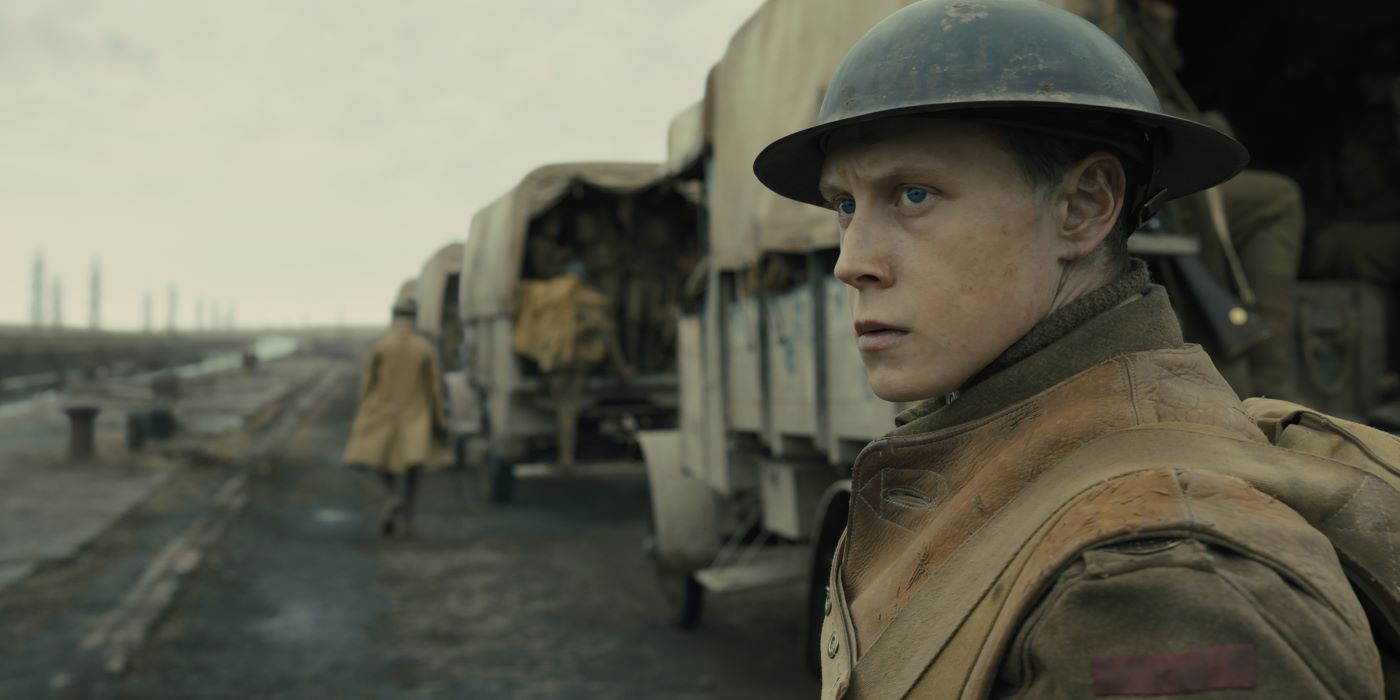
Related
10 Best British War Movies, Ranked
Many British filmmakers have found inspiration in the country’s military history, and some of the best British movies of all time focus on war.
1917’s Final Shot Of Schofield Parallels The Opening – What It Means
The Bookends Of 1917 Have A Deep Meaning That Links To The Film’s Themes
The opening of1917 shows Schofield resting against a tree, before being awoken by Blake who receives the film’s central mission. After the harrowing quest, 1917 ends with a direct parallel, showing Schofield leaning back against a tree to look at his family photo. In 1917, trees are an important symbol as they only appear at moments of peace.
The opening scene reflects this, as the characters are blissfully unaware of their mission. Shortly before the climax, a group of soldiers are shown scattered among a tree-laden field, listening to a comrade sing 1917‘s Wayfaring Stranger song. Finally, the final scene features a similar shot of Schofield against the tree once the attack is called off and hundreds of lives have been saved. Besides these instances, 1917 mostly showcases the tragic environments of war-torn France, from the endless trenches to the desolate villages.
The trees could be a metaphor for the endurance of life amid the harshness of war…
Interestingly, trees are also discussed in a conversation between Blake and Schofield. Early in their journey, the soldiers pass a field of burned-out cherry trees, and Schofield laments their destruction. However, Blake explains that they will eventually grow back, more numerous than they were before. The trees could be a metaphor for the endurance of life amid the harshness of war; Schofield wants peace but understands he needs to complete a mission first to make sure there is something to live for after it is over. War may be unflinchingly grim, but it is a fight to create a brighter future.
Finally, the first and final shots of 1917 being the same could serve as a commentary on the pointlessness of war. At the end of 1917, Schofield is left in the exact same place he found himself at the beginning of the movie. Despite this, he has undertaken a journey filled with death, destruction, and heroism, all in the name of a war he did not ever wish to fight in. The opening and ending of 1917 being the same reflect this, as the journey that caused such turmoil has the same beginning and end point.
What 1917’s Writer Has Said About The Movie’s Ending
Krysty Wilson-Cairns Has Spoken Out About 1917’s Ending
In an interview with Collider shortly after 1917‘s release, co-writer Krysty Wilson-Cairns explained some of the choices in the final moments of the film. From how the final shot of 1917 reflects the opening to Schofield’s character arc, 1917‘s ending was incredibly important to the screenwriters in conveying a lot of the film’s themes and deeper meanings. When asked why the reveal of Schofield’s family was left until the final seconds, Wilson-Cairns stated:
“He’s spent at least six months with Blake, so he’s not going to wake up in the morning next to Blake in that first scene and go, ‘Oh I’m missing my wife and child, my children.’ Because that’s not how people speak… it’s just not a reality, not how we behave.”
As evidenced by Wilson-Cairns’ comments, the choice to leave Schofield’s family until the end of the film links purely to realism. In the midst of a war with soldiers Schofield has spent many months or years with, it is unlikely to come up in conversation. More realistically, Schofield thought about his family in a quiet moment after his mission, as any normal person would do.
Krysty Wilson-Cairns’ other writing credits include Last Night in Soho, The Good Nurse, and Penny Dreadful.
Another element Wilson-Cairns commented on was Schofield’s character arc. The writer of 1917 noted that, at the beginning of the film, Schofield is unfazed by the horrors of war. The No Man’s Land sequence had Blake looking at the surrounding scenes, from dead horses and soldiers to the feasting crows and rats. Schofield, on the other hand, is scanning the horizon, focusing on his mission. Wilson-Cairns mentioned this choice was made to show how shut off from the world Schofield has become, in contrast to where he is in 1917‘s ending, where he is more like Blake:
“Blake becomes a part of him. So when he goes through all that second half of the film, he’s more like Blake than ever before. He takes chances, he runs, he does everything he can because he’s made this promise to his dying friend. And so we wanted that last scene of the film to really get that he’s just a tiny bit more like Blake there. Although he’s still back against the tree… he’s now a changed man.”
1917’s True Story Reveals A Sad Reality About Schofield’s Ending
Schofield’s Moment Of Peace In 1917’s Ending Will Be Short-Lived
A tragic behind-the-scenes fact about 1917 links to the timeline of World War I. The film takes place on April 6, 1917, ending the day later with Schofield retiring in the field. While the final scene of the film has some hopeful themes and messages, the real-world timeline of the war raises a heartbreaking fact of realism for Schofield. World War I did not end until November 1918, over 18 months after Schofield’s mission. This brings to light the harrowing reality that Schofield will inevitably be sent on another mission, one potentially more dangerous than the last.
Although the mission that was completed in 1917‘s ending was a personal victory for Schofield, the war around him rages on, and the tragedies of fighting in such a conflict are far from over. This is signified by the first and final shots of 1917, adding another layer to their depth. As alluded to, Schofield is back in the same position he was at the beginning of the film, waiting in a fleeting moment of peace until he is inevitably called up for another task.
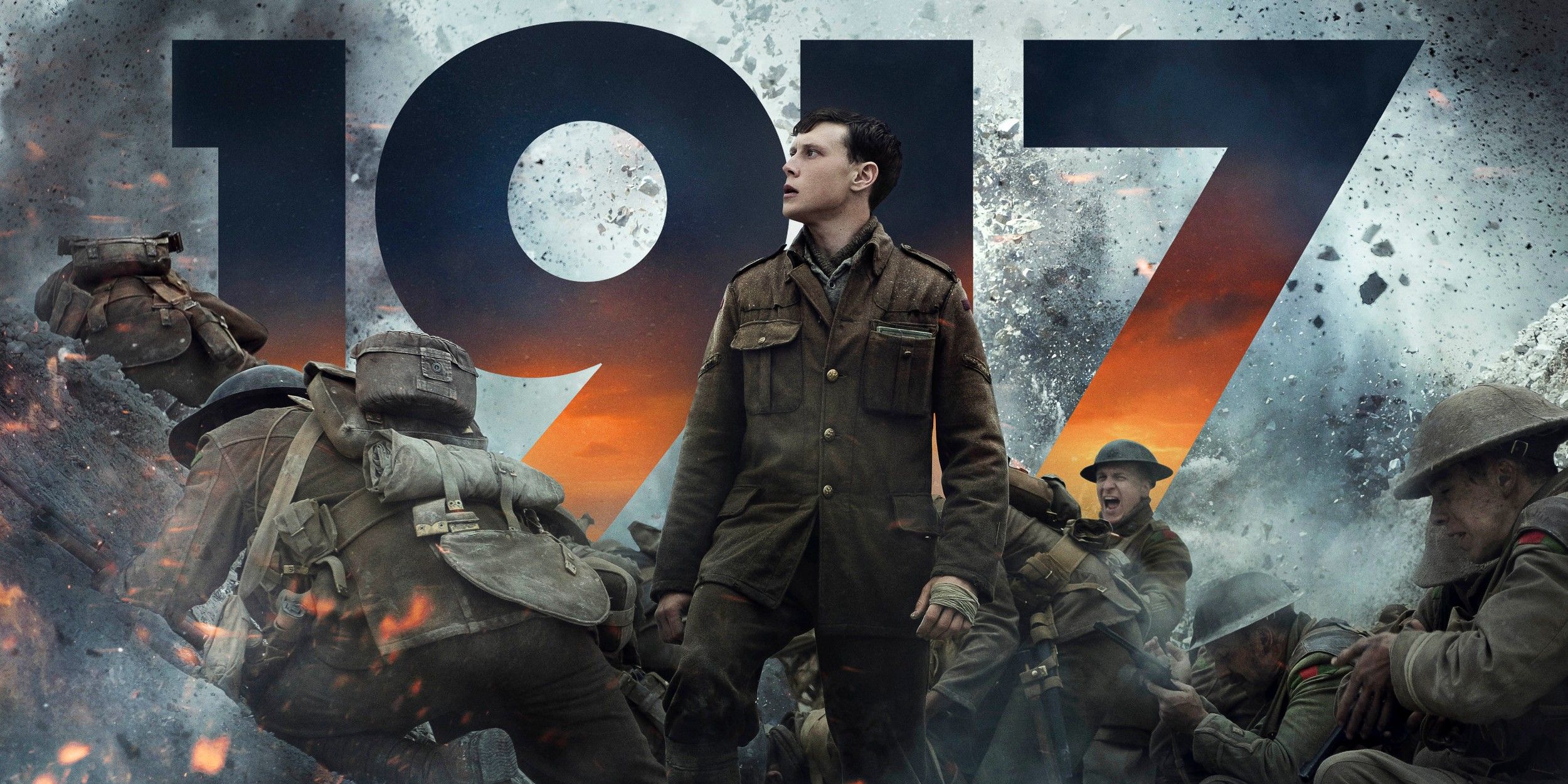
Related
1917 Review: Sam Mendes’ WWI Epic is a Better Thriller Than Drama
1917 is well-acted and an undeniable technical achievement, yet its real-time storytelling is both the film’s greatest strength and biggest problem.
The Real Meaning Of 1917’s Ending
1917’s Ending Perfectly Encapsulates The Film’s Story
1917 is an uncommonly tense, breathtaking film that ultimately hinges on one goal: to call off one attack, on one day, that will save 1,600 lives. There is a major moment of relief when Colonel Mackenzie listens to the orders, ultimately halting the attack before any major casualties happen. But before Schofield and Mackenzie part ways, the colonel says that while this ambush will be avoided, he will likely get orders in a week to attack again. While this mission may have been a success, it is likely that the peace will only be temporary.
1917‘s story may have been one of victory, but the war is far from over. There were an estimated nine million deaths among soldiers throughout the war, and while saving 1,600 lives is no small feat, it pales in the grand scheme of pointless war. Mendes and cinematographer Roger Deakins do a fantastic job of making everything seem so urgent in this one mission – and it certainly was, at the time – but through Mackenzie’s comments, it is clear how many more people were affected by this conflict – and how every one of the nine million lives lost had a story just like this.
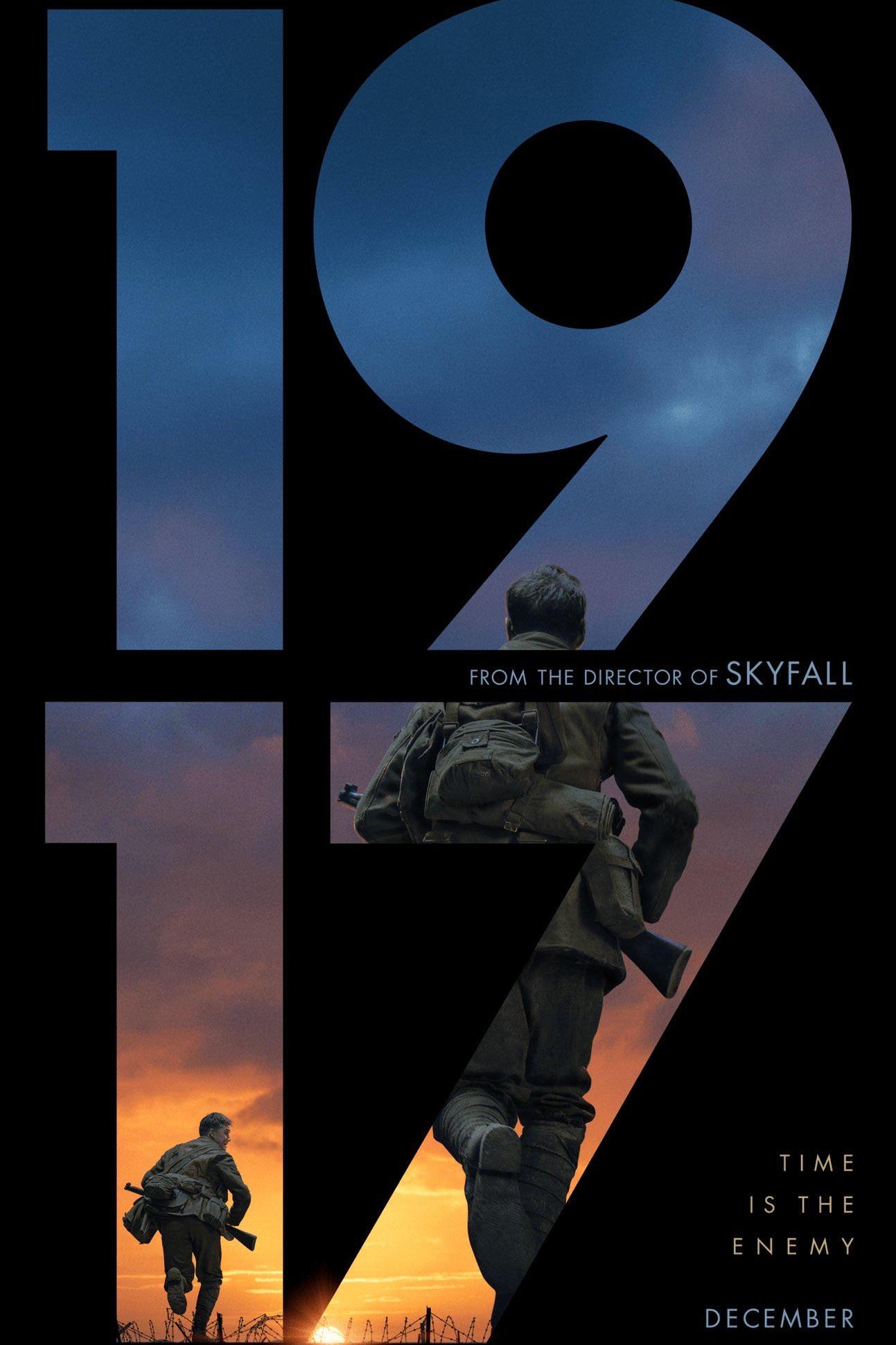
1917
Set against the backdrop of war-torn France during WWI, 1917 is directed by Sam Mendes and stars George MacKay and Dean-Charles Chapman as two young British soldiers tasked with delivering a dangerous message to stop an attack that could the lives of thousands of other soldiers at risk. The film uses long takes to make it appear that the entire narrative takes place over the course of two continuous shots. Mark Strong, Colin Firth, and Benedict Cumberbatch also star.
- Director
- Sam Mendes
- Release Date
- December 25, 2019
- Cast
- Colin Firth , Teresa Mahoney , Andrew Scott , Dean-Charles Chapman , Gerran Howell , Richard Madden , Daniel Mays , Benedict Cumberbatch , Adrian Scarborough , Mark Strong , George MacKay
- Runtime
- 119 minutes



